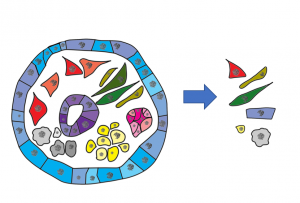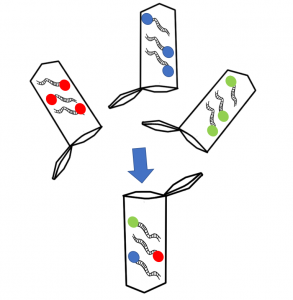There are many different reasons why single cell sequencing is a cool and exciting tool. Surely by reading our different blogs you might have caught a glimpse of some of those. But what is it exactly? And how does it work?
It starts with a very simple idea: to sequence the RNA of single cells. This is important because although all cells have the same DNA not all of it gets transcribed into RNA and then translated into proteins. So that although all cells start with the same information (DNA) not all of them end up doing the same thing. So why not sequence the RNA of all cells at the same time? Let’s borrow an example from politics (because we all LOVE politics).
When we look at the polls after a general election what we get are major trends. We can find out what politician got more votes, or who got the least. These are our “bulk” results.
But what if we wanted to know something about how different people voted. Did elderly people voted the same as young ones? How did economic background influenced their choices?
To answer these questions we would have to ask people individually with a questionnaire. Each individual vote could be a single-cell result. And the results from all questionnaires are our Single-cell sequencing. Now we could start asking more interesting questions.
 But how can we sequence RNA from one single cell? Or, even better, many single cells at the same time?We would have to overcome some technical challenges…
But how can we sequence RNA from one single cell? Or, even better, many single cells at the same time?We would have to overcome some technical challenges…
 Firstly we would have to find a way of dissociating a tissue or an animal into single cells.
Firstly we would have to find a way of dissociating a tissue or an animal into single cells.
Then we would have to separate these cells, break them open to access their RNA, and label each RNA molecule inside.
 This way we could then mix all the RNA together and still be able to find out which molecule belonged to each cell.
This way we could then mix all the RNA together and still be able to find out which molecule belonged to each cell.
As every cell usually has very little RNA we would have to make several copies of it and then we could sequence it (read out every nucleotide that makes up every molecule).
But what next? What are we going to do with our long list of nucleotides?
We need to find a good way of tracing back which molecules belonged to our cells by reading all the labels.
Then we need to know what these nucleotides mean. We can do that by looking up what RNA molecule they’re part of, this is what we call genes and what that gene does. By looking at the different genes a cell is using we can group them together by similarity. And by working out what processes these genes are part of we can tell what those groups of cells are doing.
 And then we could start asking more interesting questions such as….WHO VOTED FOR TRUMP?
And then we could start asking more interesting questions such as….WHO VOTED FOR TRUMP?

Recent Comments